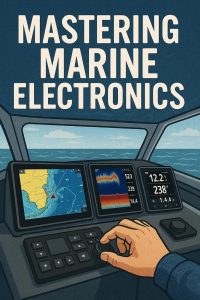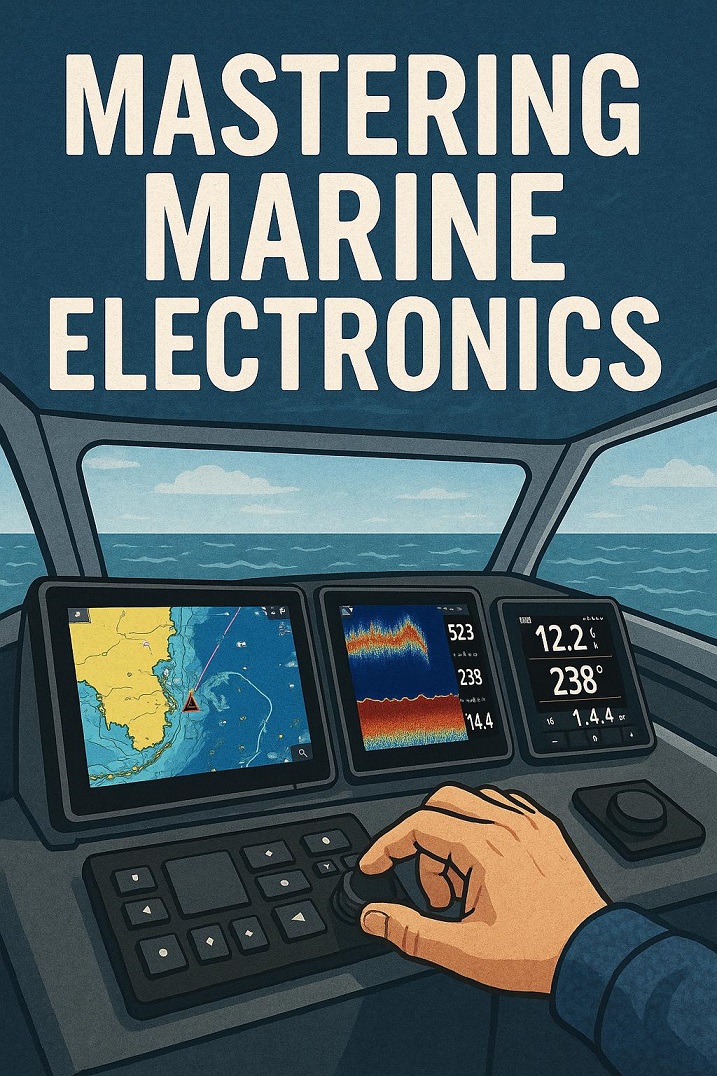Explore essential marine electronics—from navigation and radar to communication systems. Learn types, applications, and emerging trends in shipboard tech.

The Silent Force Powering Ships Safely Across Oceans
Picture a modern cargo vessel navigating through foggy waters. The crew sees nothing with the naked eye—but inside the bridge, a network of radar, GPS, and electronic charts provides a clear, real-time image of the vessel’s surroundings. This is the power of marine electronics.
In today’s maritime world, electronics are not just helpful tools; they are critical to safe and efficient navigation, communication, and onboard operations. From echo sounders and gyrocompasses to ECDIS and satellite comms, mastering marine electronics is essential for seafarers, maritime students, and engineers.
What Are Marine Electronics?
Marine electronics refer to the specialized electronic devices and systems installed aboard ships, used to support navigation, safety, communication, environmental monitoring, and operational efficiency.
These systems are often interconnected to offer real-time data, improve decision-making, and reduce risks in various sea conditions.
Why Marine Electronics Matter:
- Enable accurate navigation in all visibility conditions
- Facilitate global communication and distress alerting
- Automate ship monitoring for fuel, speed, and weather
- Enhance safety through detection and early warnings
Types of Marine Electronics Used Onboard Ships
Marine electronics can be categorized into functional groups based on their role in ship operations. Each system is engineered to perform reliably under extreme marine environments.
Navigational Electronics
These systems guide the vessel safely from port to port. Examples:
- Global Positioning System (GPS): Provides real-time location data
- Electronic Chart Display and Information System (ECDIS): Replaces paper charts and integrates GPS, radar, and AIS
- Gyrocompass and Magnetic Compass: Provide heading data
- Automatic Radar Plotting Aids (ARPA): Tracks other vessels automatically
Communication Systems
Ensure voice and data exchange between ship, shore, and other vessels. Examples:
- VHF and MF/HF Radios: Short and long-range radio communication
- Global Maritime Distress and Safety System (GMDSS): Automates distress alerts
- Satellite Communications (Inmarsat, Iridium): For global connectivity
- AIS (Automatic Identification System): Transmits vessel information to nearby ships and stations
Safety and Monitoring Devices
These devices support risk detection, alarm management, and ship-wide status updates. Examples:
- Radar Systems: Detect obstacles and landmasses
- Echo Sounder: Measures water depth beneath the vessel
- BNWAS (Bridge Navigational Watch Alarm System): Alerts if the bridge officer is inactive
- Fire Detection Systems: Continuously monitor compartments for smoke or heat
Environmental and Operational Systems
These tools monitor weather and ship conditions. Examples:
- Anemometers: Measure wind speed and direction
- Weather Fax and Navtex: Receive meteorological warnings
- Engine Monitoring Systems: Log RPM, fuel usage, and equipment status
Real-World Applications of Marine Electronics
Marine electronics are used across vessel types and sizes, from oil tankers and cruise liners to fishing trawlers and recreational boats.
Case 1: Large Commercial Vessels
Onboard VLCCs (Very Large Crude Carriers), integrated bridge systems combine radar, ECDIS, and engine monitoring into a single display. This simplifies decision-making and allows safer single-operator functionality during long transits.
Case 2: Offshore Supply Vessels
Dynamically Positioned (DP) vessels use advanced GPS, thruster controls, and real-time wind/current data to maintain position during critical offshore operations.
Case 3: Yachts and Fishing Boats
Even small boats now carry GPS chart plotters, fish finders, and emergency beacons, enhancing safety and leisure navigation.
Benefits of Learning Marine Electronics for Seafarers
Understanding marine electronics enhances employability and operational performance.
Key Advantages:
- Improved Situational Awareness: Helps officers anticipate threats
- Career Advancement: Electronic knowledge is crucial for higher licenses
- Quick Troubleshooting: Reduces downtime and improves maintenance
- Safety Compliance: Ensures regulatory adherence (SOLAS, GMDSS)
Trends Shaping the Future of Marine Electronics
Technological innovation continues to reshape how marine electronics are designed and used across the maritime industry.
One major trend is the shift toward Integration and Digital Twin Technology. Modern bridges now rely on fully integrated systems that combine ECDIS, radar, and communication tools into a single interface, streamlining navigation and operational workflows. Additionally, digital twin technology creates virtual models of ship systems, enabling advanced simulations for crew training and predictive maintenance.
Another transformative development is the use of AI and Predictive Maintenance. Artificial intelligence analyzes vast amounts of equipment data to detect potential failures before they occur, significantly reducing downtime. This technology is particularly valuable in engine monitoring and navigation systems, where early fault detection can prevent critical errors.
The adoption of Touchscreen Interfaces and Automation is also revolutionizing marine electronics. Traditional mechanical controls are being replaced by intuitive touchscreen displays, offering faster access to radar, chart plotting, and system diagnostics. These user-friendly interfaces enhance decision-making by presenting critical information in a clear and accessible manner.
Finally, Cloud-Based Connectivity is becoming essential for modern fleets. Ships now upload operational logs to cloud platforms, allowing shore-based teams to perform remote diagnostics and real-time monitoring. This connectivity improves fleet-wide management by optimizing routes, fuel efficiency, and maintenance schedules from centralized control centers.
Together, these advancements are making marine operations safer, more efficient, and increasingly automated—ushering in a new era of smart shipping.
Challenges in Marine Electronic Operations
While advanced, marine electronics can present practical challenges.
Operational Challenges:
- Signal Interference: Weather and location may disrupt GPS or radar
- Power Supply Issues: Battery failures or grounding can disable systems
- Crew Skill Gaps: Not all crew are trained in troubleshooting electronic faults
- Cybersecurity Risks: Increasing dependence on networks requires secure firewalls and update practices
Conclusion
In the world of modern shipping, knowing how to interpret and operate marine electronics is as important as understanding navigation rules. These systems act as the ship’s eyes, ears, and voice. Whether you’re just entering maritime studies or are an experienced officer upgrading your skills, investing time into mastering marine electronics is an investment in safety, performance, and career growth.
Take Action:
- Explore hands-on marine electronics simulators
- Practice interpreting ECDIS and radar overlays
- Stay updated with equipment manuals and IMO tech bulletins
FAQs
Q1: What is the difference between ECDIS and radar?
ECDIS shows chart data with GPS integration; radar detects physical objects around the vessel.
Q2: Are marine electronics mandatory on all ships?
Yes, SOLAS mandates essential navigation and communication electronics based on vessel size and voyage type.
Q3: Can a ship sail without GPS?
It is possible using traditional navigation, but risky and non-compliant with SOLAS for most vessels.
Q4: How do I train in marine electronics?
Enroll in approved maritime academies offering simulator and electronics modules.
Further Reading / References


This guide is a fantastic resource for anyone looking to understand the essentials of marine electronics. It clearly explains how systems like ECDIS, radar, and AIS work together to enhance safety and efficiency at sea. A must-read for aspiring maritime professionals!